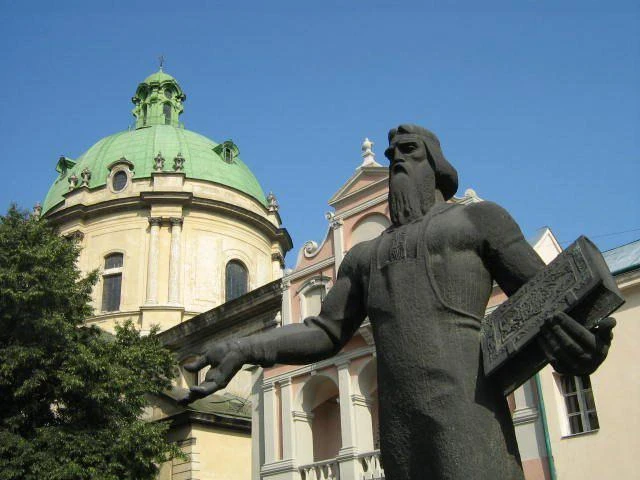Book Printer Ivan Fyodorov: myths and truths. On the occasion of anniversary of the Ostroh Bible
8 August 2023
August 12 marks the 442nd anniversary of the Ostroh Bible, the first full edition of the Slavic Bible published by Ivan Fedorovych and ‘Fyodorov’ according to the Russian.
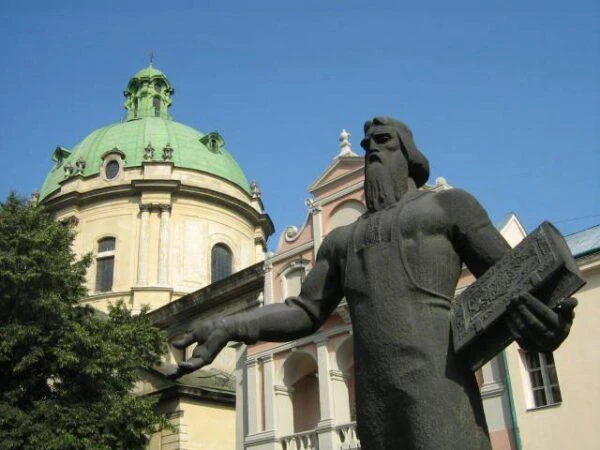
A famous foreman who was trying to make a printed text similar to a hand-written one. He was the first to try editing old canonical biblical texts to make them understandable for people.
The figure of a known printer as well as his masterpiece of printing – the Ostroh Bible – is worth paying special attention to.
Was he really the first printer? What is his true origin? Why is his patronymic name Fedorovych? What is true about the life of the printer and what myths were imposed by Soviet propaganda?
Ivan Fyodorov: image in Soviet propaganda
According to Soviet historiography, Ivan Fyodorov was a Russian, probably, was born in Moscow in 1520. He was a deacon of the Kremlin church. He became a printer of the first book publishing house in Moscow opened for the money of Ivan the Terrible. The Apostle was his first book published in 1564.
Following that, Ivan Fyodorov started publishing books also in “backward” regions of modern Ukraine and Belarus.
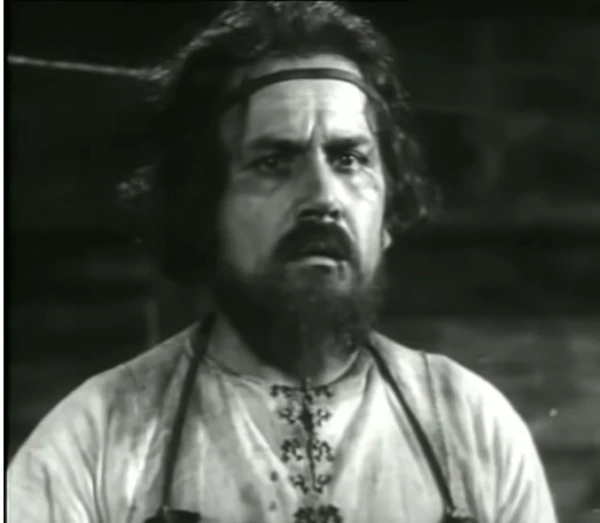
The film Ivan Fyodorov made in the USSR in 1941 makes an impression that the book printer was an ordinary man, though with extraordinary abilities. In one of the scenes, he calls himself “a villager from near Moscow…
However, this image does not match the figure he was indeed.
Ivan Fedorovych: life of a famous book printer
There are two arguments which raise the issue of the true origin of the handyman and answer them simultaneously. The first is his printing mark he signed his books with and, second, the fact of his studying at the Jagiellonian University in Krakow (1529-1532).
In the 16th century, these were children only from noble families who had the right to study at the university in Krakow, one of the most prestigious higher education institutions of Europe at that time. What noble background could the printer have had?

Researchers have found that the printing signature of Fedorovych and the emblem of the noble family of Rogoza that lived in the territory of the present-day Vileyshchina in Belarus turned out to be almost identical.
According to archive documents, Fedir Rogoza had two sons who divided his heritage indicated in documents as Bohdan and Moscow.
One can conclude that the name of the famous first book printer was likely to be Ivan Fedorovych Rogoza.
What prompted the young nobleman to forsake his family surname and where did he disappear after obtaining his degree in Krakow?
It is not known for sure but historians assume that the first printer was a catholic, belonging to the order of Jesuits, who required all prospective followers to forsake their parents, family and, accordingly, family name.
In 30 years after graduating from the university in Krakow, he emerged in Moscow, became a deacon of the Kremlin church and established the first Moscow orthodox publishing house.
How could a catholic find himself in the nearest circle of the Moscow metropolitan and become a deacon of the orthodox church? It still remains unknown.
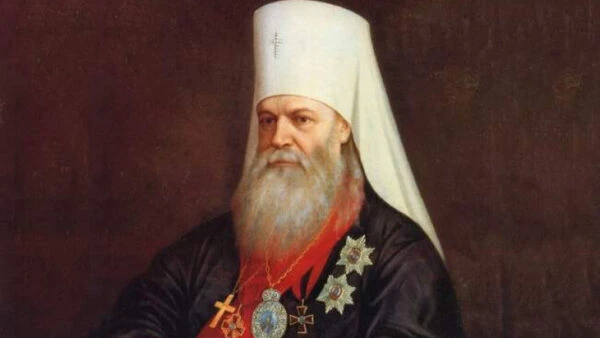
The metropolitan Makari asked the czar Ivan the Terrible to entrust the book printing with an unknown deacon rather than look for a foreign printer and, therefore, helped Ivan Fyodorov occupy a high- ranking position in Moscow.
Soon after Ivan Fyodorov was appointed, monks who copied books started their intrigues. They considered him to be a heretic who used a satanic machine to deliberately change God’s Word. They, of course, were afraid that books would become more popular than texts they copied.
The marriage of Ivan Fedorovuch with a beautiful Anastasia, when he was deprived of his deacon position, became the last drop in their confrontation with the printer.
The handyman’s patron metropolitan Makariy dies at the end of 1563, leaving Ivan without any protection.
March of 1564 saw the first book “The Apostle,” which was necessary to conduct church services, published.
At that time, Ivan’s wife gave birth to a son, also named Ivan.
Soon, rebel priests set a house which was also a publishing house of the printer on fire. The book printer managed to save only his sons and self-made printing presses.

Following those sad events, the book printer happened to be in the Grand Duchy of Lithuania, where he was sheltered by the hetman Gregory Hodkevych.
There, he returned to his favorite things and, in several years, published the Gospel and Psalter.
After Lithuania and Poland united, Hodkevych prohibited Ivan Fedorovych to publish books in the old church Slavic language and offered him a village and calm existence without publishing. The book printer, instead, declined the proposal and left for Lviv where he hoped to continue working on publishing books.

Having borrowed money, he established a publishing house and published again the Apostle to which he added some explanations how to use the book during church services.
It was thought until recently that the Apostle published in 1574 started book publishing in Ukraine.
But is it really so? As it turned out, books were printed in Lviv 100 years before the “Russian Ivan Fyodorov.”
About book printing in Ukraine in the 15-16th centuries

“He has resumed printing.” The inscription on the tomb of Ivan Fedorovych just proves the fact that the handyman renewed book printing which had been before him.
In the 60s of the last century, an article by Orest Matsiuk, a researcher from Lviv, was published. In his article, he proved that book printing existed in Ukraine even before the Russian first printer Ivan Fyodorov.
His conclusions were based on sensational documents – two pages in Latin – excerpts from a court case dating back to the 18th century. At that time, the Lviv brotherhood and monks of the Onufriyevskyi monastery in Lviv were suing each other trying to get printing equipment which had been stored at the monastery since the 15th century when it belonged to an unknown printer Stepan Dropan.
It was the latter who launched publishing just ten years after the invention of Johannes Gutenberg in 1460. Unfortunately, not a single book by Dropan has been preserved until today.

In a century, the printer Ivan Fyodorov arrived at the St. Onufriy monastery in Lviv to “resume printing.”
Ostroh Bible: history and meaning
Ivan Fedorovych did not have enough money to develop publishing in Lviv.

At the same time, a grand project was being implemented upon the initiative of the prince Vasyl-Kostiantyn Ostrozky. A full edition of all books of the Bible was about to be published in the Church Slavonic language.
So, in search of reliable texts, Vasyl-Kostiantyn Ostrozky sent ambassadors to Czechia, Poland, Moscow, Bulgaria, Greece, Palestine. He was corresponding with the Ecumenical Patriarch, created a circle of the best scholars at the Ostroh Academy to translate the Bible, having engaged a large number of translators.
The preparation to print the Bible lasted for seven years.
So, it was upon the invitation of Vasyl-Kostiantyn Ostrozky that Ivan Fedorovych came to Ostroh in 1577.
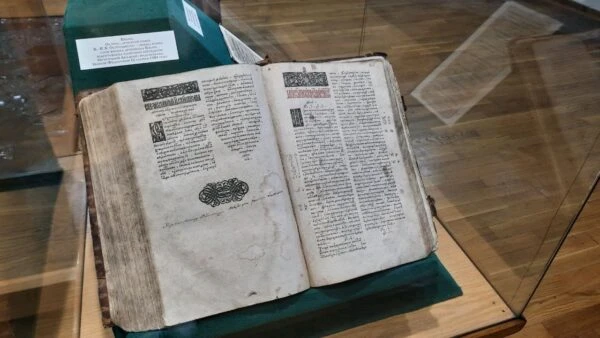
August 12, 1582 saw the grand work of the scholars and book printer published. It was a full printed Slavonic Bible which is still considered a masterpiece of world book printing.
It was for the first time in the history of printing that 6 kinds of print presses were used. Two of them were Greek and four were Slavonic which Ivan Fedorovych made particularly for that edition.
In addition to the books of the Bible, there were several prefaces. It opens with a verse for the emblem of the Ostrozky written by Herasym Smotrytsky (rector of the Ostroh Academy) that glorifies the prince. Then prefaces by Vasyl Kostiantyn and Smotrytsky follow. The afterword by Ivan Fedoroych can be found at the end.
An edition of 1500 copies was issued. There are 350 which have remained until now. They are in 24 countries on six continents. The volume has 1256 pages with 3 million 240 printed characters, with not a single mistake on them.

There are three originals of the Ostroh Bible in the town of Ostroh, the Rivne region. One of them can be found in the Book and Printing Museum.
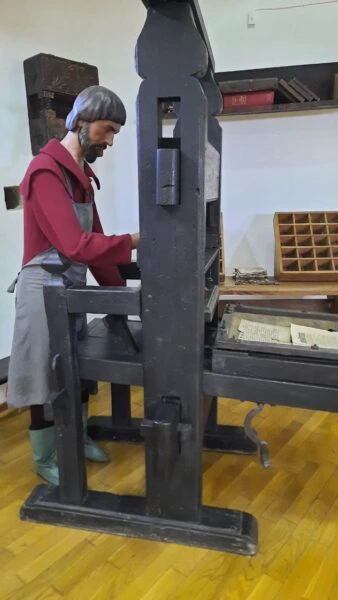
The desire of the prince Ostrozky to enlighten his subordinates led to the emerging of the Bible in an understandable language. It is a valuable treasure of Christians of Eastern Europe until today.
The material has been prepared by the CITA press-center.
